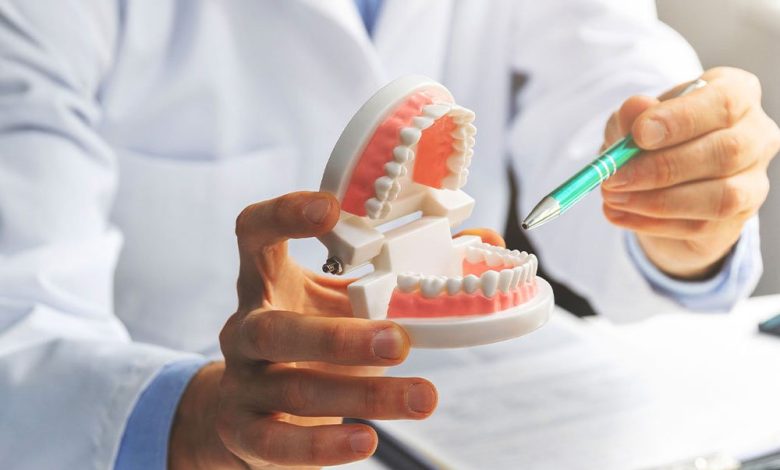The Hidden Dangers of Dental Tourism: What You Need to Know Before You Go Abroad

Dental tourism — traveling to another country to get dental care — has exploded in popularity over the past decade. For many, the appeal is obvious: dramatic cost savings, the chance to combine treatment with a vacation, and quick access to procedures that would otherwise mean long waiting lists or eye-watering local prices. But beneath the glossy before-and-after photos and package deals are real, sometimes serious, risks that patients often don’t consider until it’s too late. The hidden dangers of dental tourism, explains why they matter, and gives practical steps to reduce risk if you’re thinking about going abroad for dental work.
Why people choose dental tourism (and why it’s growing)
Cost is the most common reason. Procedures such as implants, crowns, and full-mouth restorations can cost a fraction overseas compared with prices in the U.S., the U.K., Canada, and other higher-income countries. Time is another driver: many clinics cater to “fast-track” tourists who get multiple procedures in a few days. Add powerful online marketing, patient testimonials, and curated “clinic + holiday” packages, and it’s easy to see why dental tourism appeals to so many. In some countries, the market for dental tourists is a well-developed industry with clinics that handle travel, transfers, and lodging.
But popularity doesn’t equal safety. Healthcare delivered across borders faces unique challenges — from differences in regulation and infection control to limited follow-up care once you’re back home. The Centers for Disease Control and Prevention (CDC) explicitly warns that medical tourism can expose travelers to wound infections, bloodstream infections, and illnesses like hepatitis B or C. Later management of complications — often required weeks or months after a procedure — can become complex and costly.
Hidden danger #1 — Infection and antibiotic-resistant bacteria
All dental procedures carry some risk of infection. But when treatments are performed in clinics without the same sterilization standards or infection-control oversight you’d expect at home, that risk can rise. There are multiple reports of patients returning from abroad with serious infections — including infections caused by antibiotic-resistant organisms — that can be difficult and expensive to treat. Health systems in patients’ home countries sometimes end up treating these complications, putting a strain on local resources.
Why resistant infections are a particular worry: some regions have higher rates of multidrug-resistant organisms, and post-op infections in that setting may respond poorly to standard antibiotics. Even if your initial surgery goes well, the chance of a later, deep infection around an implant or graft can lead to implant failure, repeated surgeries, and chronic pain. Early recognition and treatment are crucial — and that’s harder when the treating clinician at home has limited records from the overseas provider.
Hidden danger #2 — Variable standards, materials, and training
Not all countries (or clinics within them) follow the same standards for training, licensing, or materials. In some cases, clinics advertise “cosmetic” procedures that are actually more invasive than the patient was led to believe (for example, veneers presented as a simple “whitening” alternative but requiring substantial tooth reduction). Materials used for crowns, implants, adhesives, and sterilization may not meet the quality or traceability standards you expect. Substandard materials can fail prematurely and can even cause allergic or toxic reactions.
Even when individual clinicians are skilled, broader clinic infrastructure matters: proper sterilization equipment, adequate anesthesia monitoring, emergency protocols, and staff training for complications are essential. These systems aren’t visible in glossy photos or marketing copy, and they vary widely between clinics and countries. The American Dental Association (ADA) recognizes dental tourism as an ethical and clinical concern, urging patients and dentists to consider continuity of care and professional responsibilities when cross-border care occurs.
Hidden danger #3 — Poor pre-op evaluation and over-treatment
A responsible dental treatment plan starts with a full evaluation: X-rays, clinical exams, models, and sometimes multidisciplinary input. In the dental tourism model, some clinics have strong incentives to convert visitors into high-revenue procedures quickly. That can lead to overtreatment (performing crowns, root canals, or implants that might not have been necessary with careful conservative management) or to quick, multi-stage procedures that prioritize speed over staged, evidence-based care. A rushed treatment plan can produce irreversible changes — like extensive tooth reduction — that limit future options. Several media analyses have highlighted cases where patients returned home with irreversible damage after aggressive cosmetic dentistry abroad.
Hidden danger #4 — No easy legal recourse or regulated complaints process
If something goes wrong at home, it’s generally straightforward to lodge a complaint with a local regulator, pursue legal action, or request a second opinion. When care is provided in another country, legal recourse can become murky, expensive, or effectively impossible. Cross-border litigation is complex: different legal systems, language barriers, variable malpractice standards, and high costs can deter patients from pursuing compensation or corrective treatment. This legal gap turns minor complications into long-term problems for many patients. The ADA’s ethics documents point out the professional responsibilities of dentists dealing with patients who have received care abroad, including how to manage subsequent care and communication.
Hidden danger #5 — Follow-up and continuity of care problems
Dental procedures — especially implants, bone grafts, and complex restorative work — often require follow-up visits, adjustments, and long-term monitoring. Dental tourism’s “one-and-done” vacation model doesn’t lend itself to appropriate follow-up. If a complication appears after you travel home (implant mobility, infection, bite problems, or prosthetic issues), coordinating follow-up with the original provider is hard. The local dentist may be reluctant to rework someone else’s work or may charge considerably to fix problems. In many documented cases, patients return home with inadequate or missing records, making diagnosis and treatment more difficult.
Hidden danger #6 — Travel-related medical risk and recovery issues
Dentistry isn’t always just a “chair-side” affair. Many procedures involve sedation, IV medications, or surgical interventions that increase the risk of complications like bleeding, emboli, or deep infection. Long flights soon after surgery can raise the risk of deep vein thrombosis (DVT) in susceptible patients and impede recovery. Managing post-operative pain, antibiotics, or emergency complications while traveling is more challenging than at home. The CDC and specialist travel guidelines recommend careful planning and consideration of health status before undertaking medical travel.
Hidden danger #7 — Misleading marketing and unrealistic expectations
Online marketing for dental tourism often features dramatic transformations, glowing testimonials, and price comparisons that make the choice appear obvious. But marketing selectively shows success stories. Media research shows newspapers and social platforms frequently sensationalize “happy ending” cosmetic cases while glossing over follow-up complications. Clinics have commercial motivations to close sales; photos can be edited, and “before/after” results may not reflect routine outcomes or long-term success. Patients can leave with unrealistic expectations about durability, function, and complications.
Hidden danger #8 — Insurance, cost traps, and the full financial picture
At first glance, dental tourism promises big savings. But the initial price often doesn’t include travel costs, accommodation, extra procedures discovered during treatment, or costs for dealing with complications later. Many domestic dental insurance plans explicitly exclude coverage for procedures performed abroad. Moreover, if a complication requires emergency care once you’re home, those bills can be steep. When you factor in the potential need for corrective procedures locally, the apparent savings can vanish. Be sure to calculate the full, conservative financial picture before booking.
How to reduce risk: practical steps if you’re considering dental tourism
If after reading this you still want to explore dental tourism, take a conservative, evidence-based approach. Here are practical steps that minimize risk.
- Get a thorough pre-travel evaluation at home. Have your dentist at home evaluate your needs first, including X-rays and a written treatment plan. This gives you a baseline and a second opinion about the proposed overseas plan. It also helps spot red flags where the recommended treatment might be more extensive than necessary.
- Research clinic accreditation and provider credentials. Look beyond glossy websites. Verify dentist licenses, clinic accreditation (for example, Joint Commission International (JCI) or reputable national bodies), and ask for the lead clinician’s training details. Contact the local regulator if you are unsure how to verify credentials in the host country.
- Ask for detailed, written treatment plans and materials lists. Request a written plan that includes diagnoses, alternative options, materials to be used (brand and country of manufacture), anesthesia plans, expected timelines, and expected follow-up. If they’re unwilling to provide transparent documentation, that’s a red flag.
- Confirm infection-control protocols. Ask how instruments are sterilized, how single-use items are handled, and whether the clinic performs routine infection-control audits. Clinics that avoid direct answers or provide evasive responses should be avoided.
- Plan follow-up care in advance. Ask the clinic how they handle post-op complications for international patients. Who will be your point of contact? Are telemedicine follow-ups available? More importantly, confirm that your local dentist is willing to receive records and co-manage any complications.
- Verify before-and-after photos and patient references. Request verifiable patient references (not just social media comments) and documentation of similar cases, ideally with long-term follow-up, not just immediate post-op photos.
- Check travel health guidance and vaccinations. Review CDC travel guidance and Yellow Book information for the destination so you’re aware of local public-health concerns and travel precautions. Plan your return flight timing sensibly after any sedation or surgical procedures.
- Consider travel/medical insurance that covers complications. Standard travel insurance may not cover elective dental work. Look for policies designed for medical tourism that include coverage for complications and medical evacuation if necessary. Read policies carefully — many exclude elective procedures.
- Be realistic about cost vs. value. Factor in the potential downstream costs of complications and revision work. If something sounds “too good to be true,” it may be. Price alone is a poor proxy for safety or quality.
- Avoid combining extensive surgery with a tourist schedule. Plan realistic recovery time and avoid packing your itinerary with activities that might stress healing tissues (diving, excessive sun exposure, heavy drinking, etc.). Allow time for initial healing and monitoring.
If something goes wrong: what to do
- Seek prompt care locally. Don’t wait for the overseas clinic to respond if you have signs of infection, severe pain, fever, or other worrying symptoms. Early local intervention can prevent escalation.
- Gather all records and photos. Try to obtain as many records, radiographs, and photographs as possible from the treating clinic. Even partial documentation helps your local clinician assess and plan corrective care.
- Notify your local dentist and your home health system. Your domestic dentist can coordinate care, provide antibiotics or emergency treatment, and liaise with specialists. Consider contacting local public health authorities if there’s concern about resistant infections.
- Consider legal options carefully. If malpractice occurred, consult a lawyer experienced in cross-border medical cases. Be aware litigation is often costly and uncertain. Document everything.
Final thoughts: balancing cost and safety
Dental tourism can deliver real savings and, for some patients, acceptable outcomes — particularly when clinics are reputable, transparent, and when patients and their home dentists collaborate closely. But the model also creates gaps in continuity of care, regulatory oversight, and patient protection that are frequently underplayed in marketing materials. Recent reviews and reporting highlight cases of severe complications, rising burdens on home health systems, and growing concern about antibiotic-resistant infections tied to medical travel. For elective, irreversible dental work — especially procedures that rely on long-term integration like implants — the stakes are high.




